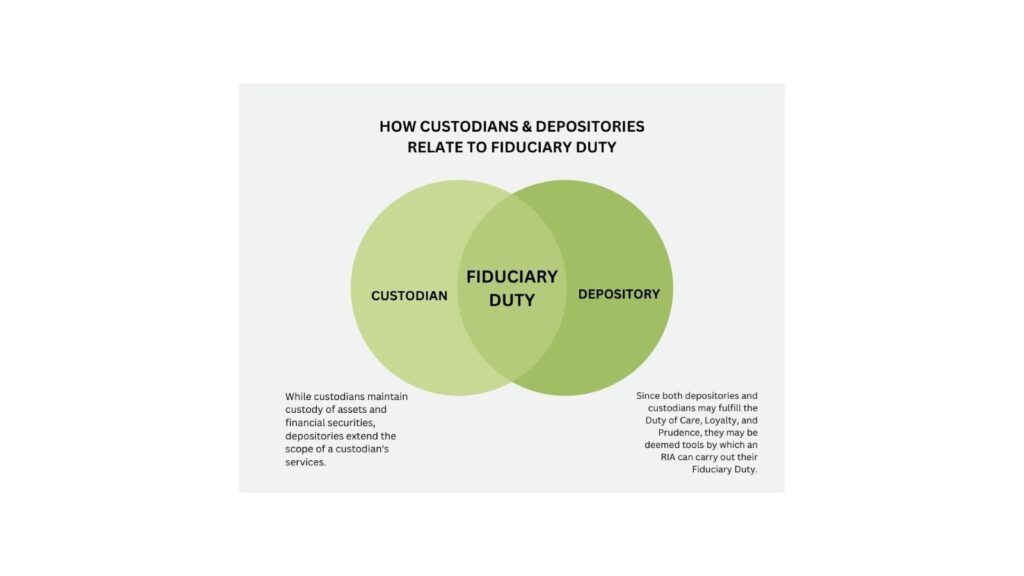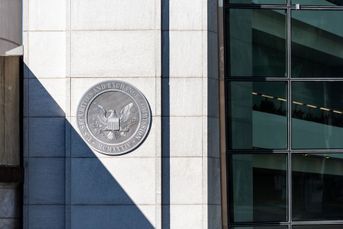SEC custody rules: what you need to know on upcoming changes

The SEC recently proposed sweeping changes to the Custody Rule. Here’s a look at the Custody Rule and some of the proposed amendments
Part of the SEC’s mandate is to regulate the activities of Registered Investment Advisers (RIAs). This involves ensuring that advisors adhere to the SEC Custody Rule under the Investment Advisers Act of 1940, specifically Rule 206(4)-2.
In a nutshell, the Custody Rules define an RIA’s responsibilities in relation to the holding of their clients’ assets.
So, what is the Custody Rule? What are the SEC Custody Rule requirements? And what are the SEC Custody Rule proposals? For this article, we delve into the important aspects of custody rules and cover its proposed amendments.
What is the SEC custody rule?
The SEC custody rule applies to RIAs and how their clients’ assets are held. The rules require that:
- RIAs maintain their clients’ assets and securities via a financial institution or entity that meets the criteria for a qualified custodian
- RIAs must notify their clients in writing. They must provide the custodian’s name, address, and how their assets are held
- RIAs must have a reasonable belief that the custodian will provide account statements to clients in a timely manner
- every year, RIAs must submit to an annual surprise examination to independently verify their clients’ assets and securities
The custody rule is one that allows RIAs to hold client assets and securities in a separate account for each client. The account must be under that client’s name or in an account under the advisor’s name. Should any funds be held by the advisor, they must be named as an agent or trustee for their clients.
In simpler terms, the custody rule requires that all investment advisers and similar entities keep client securities and funds safe while those assets are in the adviser’s possession.
An investment advisor, trader or broker must keep their client’s assets separate and apart from their own. The financial advisor cannot mix or comingle their clients’ money with theirs or tap into it for the firm’s use.
There will be other changes to the SEC custody rule that would expand its scope. One of the most significant changes would extend the rule to include a broader range of assets.
The amendments now have the following assets covered by the custody rule:
- real estate
- options
- short positions
- precious metals
- cryptocurrency
- physical commodities (i.e. wheat, lumber, or whisky)
- valuable works of art
The amendments now also require qualified custodians to keep possession or control of client assets, as stipulated in a written agreement with an RIA.
What is the purpose of the SEC custody rule?
The main purpose of the SEC amendments is to enhance protections for client assets while reducing burdens on advisors that have custody of those assets.
The custody rule is also designed to:
- protect client assets against theft
- safeguard against misappropriation and bankruptcy
- update the recordkeeping requirements
For example, a brokerage cannot use client assets to make its own investments and put that money at risk. No advisor can use client money as operating funds either, similarly putting that money at risk if the firm goes out of business.
A real-world example of this is the case of now-defunct cryptocurrency exchange FTX, where investigators found evidence of theft and comingling of assets which the custody rule prohibits. This case prompted a reevaluation of the rules on cryptocurrency and similar assets.
The proposed changes to the custody rule seem beneficial, even necessary at first glance, but this short video from the president of the Investment Advisers Association suggests otherwise. It appears that the sweeping changes to the custody rule were created without considering their impact:
What is the definition of “custody” under SEC rules?
An advisor is said to have custody if they hold, directly or indirectly, client funds or securities. They are also deemed to have custody if they have any authority to obtain possession of these funds or securities. The custody rule now extends to a broader range of assets.
Amendments to the custody rules:
Recent amendments to the custody rules revised the definition of custody. Custody now includes instances where an adviser’s related person has custody of client assets in connection with their advisory services. For example, if an RIA’s affiliated broker-dealer holds client assets as a qualified custodian as part of their advisory services, then the adviser is considered to have custody of those assets as well.
These amendments are part of the SEC’s Proposed Safeguarding Rules as outlined in this fact sheet.
What are the criteria that a custodian must meet to be eligible?
According to the Investment Advisers Act, RIAs must use a “qualified custodian” to hold their clients’ assets. The US Securities and Exchange Commission deems the following as qualified custodians:
- state-chartered or federal banks
- state-chartered or federal savings associations
- registered futures commissions merchants
- registered broker-dealers
- some Foreign Financial Institutions (FFIs)
For Foreign Financial Institutions to qualify as custodians, they must maintain client assets separately from their own.
Regardless of the type of entity, the RIA custodian’s primary role is handling transactions. They can also handle bookkeeping and offer other specialized services.
While RIA custodians can work with investment advisory firms, they can also deal directly with individual investors. For instance, a custodian can hold assets on behalf of one or more RIAs, while also offering brokerage accounts or retirement accounts to their own clients.
Does the SEC regulate custodians?
Technically, no, the SEC does not directly regulate custodians. But due to the Proposed Safeguarding Rule as of early last year, additional “guardrails” may be set. These added guardrails are required of any type of financial institution that acts as a qualified custodian, across all asset classes.
Some advisers may notice that some of these requirements are consistent with standards of care that already apply to qualified custodians or have become market practice.
The Proposed Rule now requires the advisor to get “reasonable assurances” in writing from each qualified custodian. The qualified custodian will provide certain client-enumerated safeguards, which are as follows:
1. Standard of Care is applied
When discharging its custodial duties, the qualified custodian will exercise due care in accordance with reasonable standards. It will also implement appropriate measures to safeguard client assets.
2. Sub-custody is secondary
Any sub-custodial, securities depository or other similar arrangement regarding the client’s assets does not excuse any of the qualified custodian’s obligations to the client.
3. Clients receive assurance and indemnification
The qualified custodian will ensure that insurance arrangements are in place to adequately protect the client, regardless of the difficulty in obtaining them for certain asset classes (like cryptocurrency assets, for example).
The qualified custodian agrees to compensate the client against the risk of loss of the client’s assets. This happens in the event of the qualified custodian’s negligence, recklessness, or willful misconduct.
4. Client assets will be segregated
The qualified custodian is obliged to hold client assets in a custodial account, distinct and separate from the qualified custodian’s proprietary assets and liabilities.
5. Clients will not have to pay security interest or lien
The qualified custodian will not subject client assets to any right, charge, security interest, lien, or claim for itself or for its related persons or creditors. The only exception to this rule is if the client agrees to such an arrangement.
What happens if a qualified custodian cannot maintain certain assets?
The SEC understands that there may be unusual situations where the assets might be difficult, if not impossible, for a qualified custodian to safekeep or maintain. This can be cases where the assets are physical assets or privately offered securities.
The Proposed Rule provides an exception to maintain these client assets with a qualified custodian if:
- the advisor reasonably determines and documents in writing that a qualified custodian cannot record or maintain ownership or control transfers of beneficial ownership of such assets
- The advisor can safeguard the assets from loss, theft, misuse, misappropriation, or the advisor’s financial reversals, including the advisor’s insolvency or bankruptcy
To apply this exception, the advisor must also have a written agreement with an independent public accountant. The accountant must be informed of any purchase, sale, or transfer of beneficial ownership of these assets within one business day.
Should the independent public accountant find any discrepancy, they should notify the SEC within one business day of its discovery.
Each privately offered security or physical asset not maintained with a qualified custodian must be verified in either a surprise examination or audit.
What is the “surprise examination” and what is it for?
The surprise examination is a requirement of the SEC Custody Rule 206(4)-2. The rule requires that advisers have a yearly “surprise examination” done by an independent public accountant. They may also engage the services of an accounting firm registered with the Public Company Accounting Oversight Board (PCAOB).
This examination of funds and securities must be conducted annually, on random dates chosen by the independent public accountant or accounting firm. The purpose of the surprise examination is twofold:
- To confirm that all funds and securities held by the investment advisor for clients are handled by a qualified custodian
- To confirm that the assets are held in separate accounts for each client. This is to ensure that the investment advisor is not combining or using their clients’ assets with their own
The surprise examination is completed by performing the following steps:
- Step 1: the accountant sends confirmation requests of the date of examination to the qualified custodian, verifying that the funds and securities are held in separate accounts in the name of each client.
- Step 2: the accountant then sends confirmation requests directly to the adviser’s clients, informing them of the date of the examination. They also verify the client’s account activity since the last examination, including any contributions or withdrawals of funds or securities.
- Step 3: reconciling and reporting any discrepancies in the confirmations received by the accountant to the books and records of the investment advisor
- Step 4: the accountant issues an examination report once the preceding steps are completed, and the independent accountant is satisfied that the investment adviser has complied with Rule 206(4)-2.
For the investment advisor to pass the audit, the report should say that they complied with Rule 206(4)-2 in all material aspects. The period of compliance covers the examination date and during the period since the last surprise examination.
What is the difference between a custodian and a depository?
Custodians and depositories both provide asset-holding services. The main difference lies in the extent of their responsibility over such assets. A depository usually has legal ownership and controlling power over the assets, while custodians typically do not.
Depositories have the added duties of performing asset management. They must maintain, issue, buy, and sell assets and securities in their care according to legal and regulatory guidelines. On the other hand, custodians only do so on the instructions of investors.
In terms of loss, depositories are largely responsible for any losses incurred from investment activities.
As for custodians, they are only expected to ensure that trades push through and are only liable for general losses, such as damage, theft, or negligence.
While custodians maintain custody of assets and financial securities, depositories extend the scope of a custodian’s services.
A securities depository that stores financial securities allows for book-entry transfers of those assets and clearing and settlements.

What both entities have in common is that they can be used as tools for an RIA to carry out their fiduciary duties to clients.
What happens next with the SEC custody rules
The proposed amendments to the SEC’s custody rules were first drafted in February of 2023, but comments were reopened in May of that year. Since then, many prominent investors’ groups have voiced their opinions, claiming that the proposed amendments, if passed, may do more harm than good.
As of this writing, the Proposed Safeguarding Rules have not been officially implemented pending more reviews and discussions between the US SEC and several investors’ groups. It is unknown if these proposed rules will pass or go through a round of revisions.
Be sure to keep your eyes on this space for more RIA-related topics for a wealth of information to support you in your career.
Learn more about reprints and licensing for this article.








